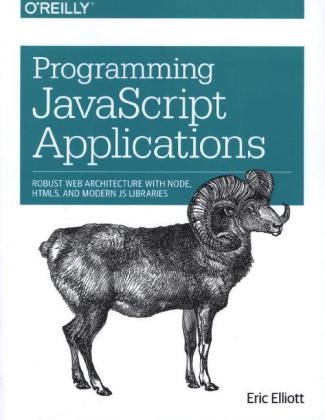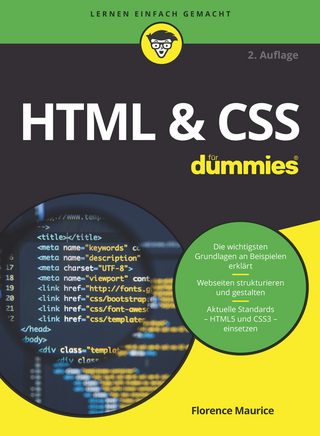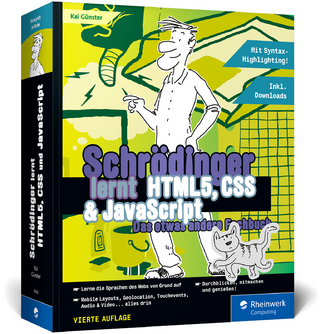
Programming JavaScript Applications
O'Reilly Media (Verlag)
978-1-4919-5029-6 (ISBN)
JavaScript may be the most essential web programming language, but in the real world, JavaScript applications often break when you make changes. With this book, author Eric Elliott shows you how to add client- and server-side features to a large JavaScript application without negatively affecting the rest of your code.
- Examine the anatomy of a large-scale JavaScript application
- Build modern web apps with the capabilities of desktop applications
- Learn best practices for code organization, modularity, and reuse
- Separate your application into different layers of responsibility
- Build efficient, self-describing hypermedia APIs with Node.js
- Test, integrate, and deploy software updates in rapid cycles
- Control resource access with user authentication and authorization
- Expand your application’s reach through internationalization
Eric Elliott is a veteran of JavaScript application development. His roles include JavaScript Lead at Tout (social video), Senior JavaScript Rockstar at BandPage (an industry leading music app), head of client side architecture at Zumba Fitness (the leading global fitness brand), several years as a UX and viral application consultant, and author of h5Validate, an HTML5 form validation plugin for jQuery.
Chapter 1 The JavaScript Revolution
Advantages of JavaScript
Anatomy of a Typical Modern JavaScript App
Chapter 2 Functions
Minimize Side Effects
Function Definition
Function Scope
Method Design
Functional Programming
Asynchronous Operations
Conclusion
Chapter 3 Objects
Classical Inheritance Is Obsolete
Fluent-Style JavaScript
Prototypes
Object Creation
Factories
Prototypal Inheritance with Stamps
Conclusion
Chapter 4 Modules
Principles of Modularity
Interfaces
The Module Pattern
Asynchronous Module Definition
Node-Style Modules
npm
ES6 Modules
Building Client-Side Code with CommonJS, npm, Grunt, and Browserify
Conclusion
Chapter 5 Separation of Concerns
Client-Side Concerns
Server-Side Concerns
Conclusion
Chapter 6 Access Control
Authentication
Authorization
Conclusion
Chapter 7 Logging
Debugging
Server Operations
Security
Auditing
Business Analytics
Logging Checklist
Logging Requests
Logging Errors
Sample Log Output
Logging Service Alerts
Logging Goals
Profiling and Instrumentation
Logging Client-Side Events
Deciphering Data
Conclusion
Chapter 8 Building RESTful APIs
Usable
Self-Describing: Hypermedia
Responsive APIs
Optimizing for Speed
Conclusion
Chapter 9 Feature Toggle
Organizing Features
Lifespan of a Feature
Implementation
Conclusion
Chapter 10 Internationalization
Conclusion
Appendix JavaScript Style Guide
Example Tests
QUnit Primer
Code Quality
Best Practices Quick Reference
Colophon
| Erscheint lt. Verlag | 19.8.2014 |
|---|---|
| Verlagsort | Sebastopol |
| Sprache | englisch |
| Maße | 181 x 233 mm |
| Gewicht | 426 g |
| Einbandart | Paperback |
| Themenwelt | Informatik ► Web / Internet ► HTML / CSS |
| Informatik ► Web / Internet ► JavaScript | |
| Schlagworte | HTML5 • JavaScript • Webdesign • Webentwicklung |
| ISBN-10 | 1-4919-5029-3 / 1491950293 |
| ISBN-13 | 978-1-4919-5029-6 / 9781491950296 |
| Zustand | Neuware |
| Haben Sie eine Frage zum Produkt? |
aus dem Bereich


